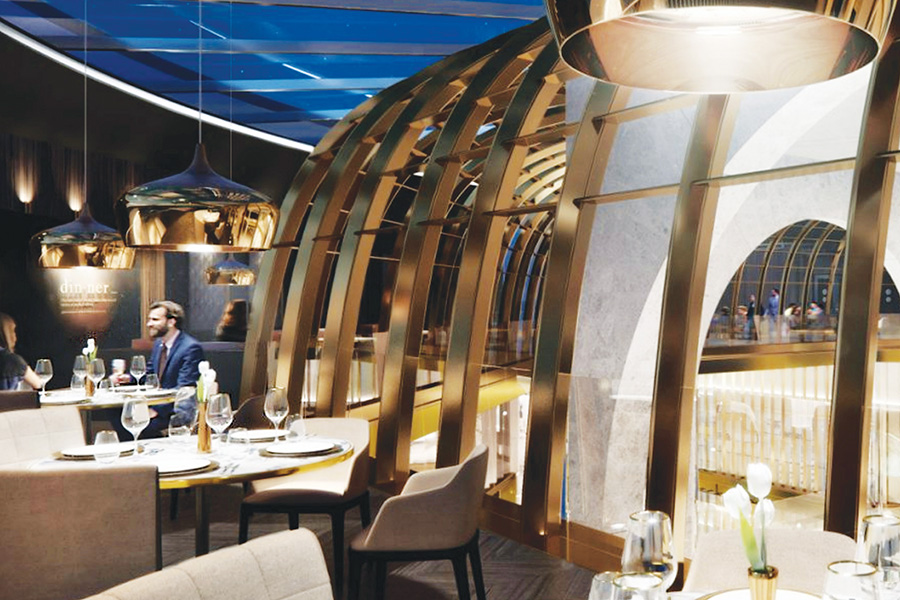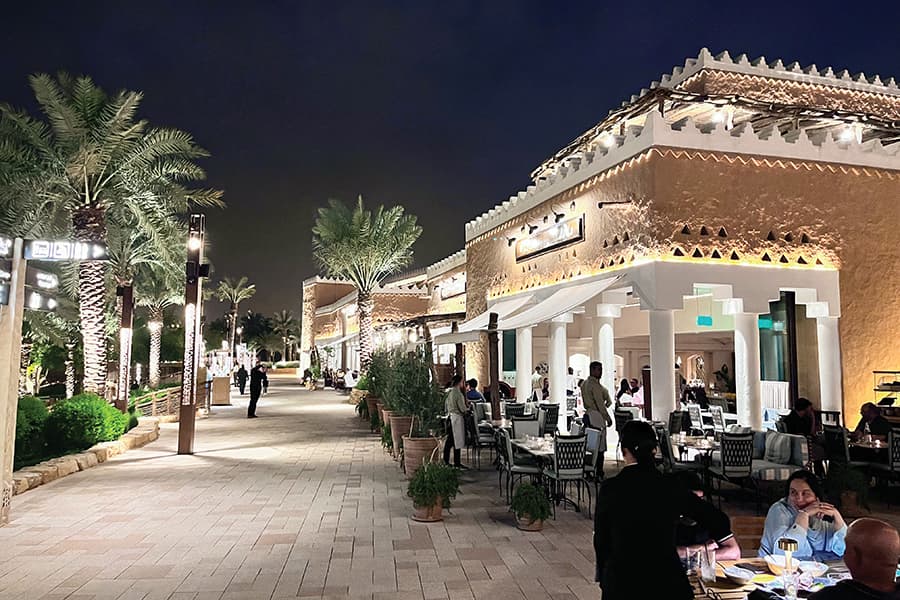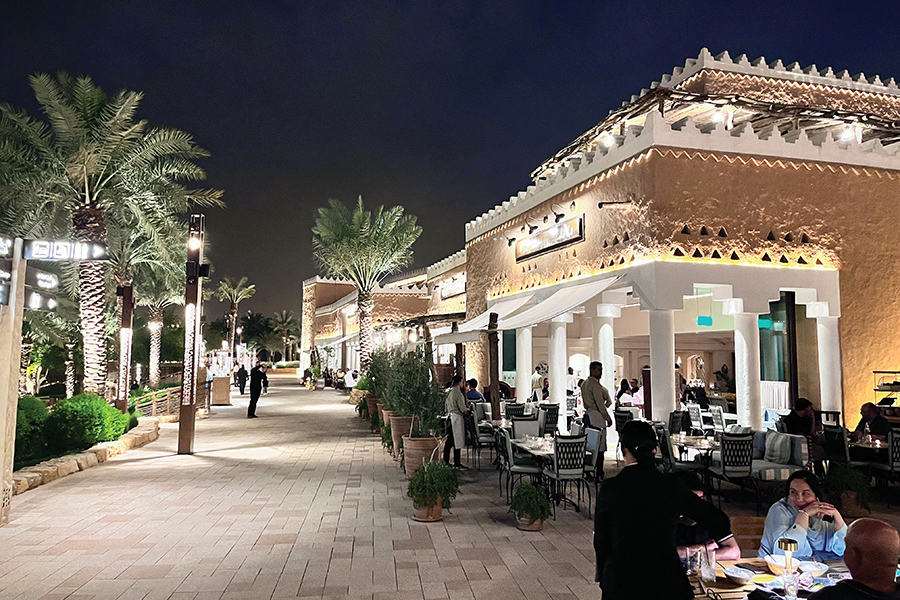Are you cannibalising your spend potential?
Part 1
As ‘fast casual’ is now superseding QSR as a category across retail centres, lines are being blurred on several levels with the ‘smart casual’ category, specifically on food quality, service, price points, decor and ambience. While this results in an elevation of experience, if not considered within a strategic masterplan, the deliberation can be confusing to a customer, and targeted food spend will not be maximised. In Part One of this two-part article, Francis Loughran, Managing Director of Future Food, highlights the importance of developing a customer-centric range of hospitality products, based upon the principle of dividing and differentiating the offers.
As the percentage of GLA dedicated to F&B within retail centres continues to grow globally, it is vital that the food and beverage offer for any retail centre is masterplanned using a series of disciplines. An F&B strategy must clearly identify who the centres’ customers are (or which ones are being targeted), what F&B options they seek, when they want it, how much they are prepared to pay for it, and how much this is worth to the centre in total dollar value. Identifying the sustainable volumes of F&B GLA, when it comes to potential spend on F&B, is crucial to all stakeholders. While all major shopping centre developers strive to maximise their F&B GLA, and therefore their rental and asset value, casualties are more likely to occur when there is a disconnect (or imbalance) between potential sales and actual sales, due to incorrect positioning or dilution in spend.
All food businesses aim to maximise average spend; however, if the offer is over-elevated in certain dining environments, the customer may be receiving all the trimmings of a dining terrace or a smart casual restaurant precinct at fast casual prices. This results in lower average spend and possible cannibalisation of similar food concepts.
When Future Food developed our F&B Positioning Pyramid, it was created to demonstrate that each category (echelon) has specific characteristics and a spend potential associated with it. This, along with our Forecast of Sustainable Volumes, forms the basis of our masterplanning strategies: which clusters to be developed, what sales potential can be expected from each cluster, and how to increase frequency of visit and dwell time.
Over the years I have seen, time and time again, that masterplanning within retail centres is being dictated through a leasing strategy as opposed to development strategy, and this has resulted in bastardisation of clusters and their positioning statements. The end result? Lower spend in a potentially elevated spend environment, which negatively impacts targeted MAT per square metre!
- Undervaluing the precinct
- Cannibalisation of sales
- Cheap eats within entire precinct, not just the food court kiosks
- Limited or no add-on sales
- More fast food choices
- Confusion and duplication
- Less product segmentation from a marketing point of view
- Reduced customer experiences
A successful and strategic F&B masterplan for a retail centre, whether a greenfield site or a redevelopment, is the ability to differentiate and diversify its F&B offers across various echelons of the Future Food Positioning Pyramid, and to maximise sales potential and extended trading hours. Traditional malls in Australia offer two meal occasions: namely, morning coffee and lunch, with possibly one late night’s trading for the food. Today, many modern malls operate three meal times and all-day dining, with an extended dinner, and bar services five or six nights each week, with some lounges and restaurants going later into the evening. This underlines a requirement to carefully precinct F&B offers and categories even more, to ensure that sales potential (and increase in average spend) are achieved.
While working on several projects across Australia, on quite a few occasions, I have witnessed how a leasing-based strategy can negatively impact returns on investment for developers and stakeholders of retail centres. Instead of ‘dividing and diversifying’ F&B across the pyramid, lease equity dictates (or adds) F&B concepts within clusters and precincts that aren’t aligned to the positioning statement, and this dilutes spend. Certain fresh food precincts offer more prepared food, and less produce, cannibalising trade from the food court. Alfresco dining piazzas are being remixed with the fast casual brands, which attract a $10–$14 spend within a potential $20–$30 average spend location that has been dedicated to smart casual concepts!
A desire by asset owners to ‘fill shopping centres with food’ has consequences for all shareholders concerned. The scientific modelling behind sustainable volumes has been developed for a reason; however, there is an increasing propensity to use ‘food’ as a filler, as opposed to forming a carefully curated customer-centric mix aimed at delivering a memorable experience (place, space, entertainment, engagement, activity, immersive elements, etc). Clusters need to be developed based on customer segmentation: who are your target customers, what are their buying patterns, and how can you encourage them to spend a little more than they are used to, based on experience and engagement? Segmenting (or precincting) F&B across a strategically developed range of price and service levels not only provides an interesting and diverse mix of F&B choice, but will also appeal to specific customer segments, and this validates the F&B cluster. It also allows retail centres to avoid ‘more of the same’, where key factors such as concept, price and experience are duplicated and the customer suffers from menu fatigue or boredom (due to replication of experience). ‘Divide and diversify’ is the key to offering something for everyone, while mitigating revenue erosion!
If maximisation of customer spend, within a design-driven environment that has a clear and concise positioning statement, is a core commercial objective of retail centres, then the foundation of an F&B masterplanned strategy should be based on how the propensity of customer spend is maximised. How are tailored F&B concepts being offered that target specific customers, based on specific experiences? Not all customers are food court customers, which is why, in 2001, Future Food developed the first ‘café court’ at Westfield Bondi Junction. This reasoning has been applied again, with the creation of Melbourne’s first café court at Emporium Melbourne last year. While masterplanning the Café Court here, if national QSR majors had been programmed in, not only would this have resulted in a dilution of spend, but also leakage from other specialty concepts, resulting in a reduction in possible turnover rent due to lower sales. This is why it is imperative to program concepts and brands that are aligned to a price point, which is based on experience, targeted to a specific customer base.
Customers are prepared to pay more when the F&B offer is elevated (whether it is a café court as opposed to a food court, or a dining terrace instead of a café court). Diluting the spend potential by introducing concepts that are lower price points (even if the interior design, environment and ambience of the concept are elevated), will not only cannibalise sales from other concepts in the precinct, but will also reduce the positioning statement of the cluster. It is important to maintain a strategy and formula to separate price points across all pre-determined and sustainable dining echelons (kiosks, cafés, food court, café court, luxe cafés, bars, lounges, restaurants, etc).
Food has become the benchmark by which a project’s creditability is judged to be true destination. Food will continue to rank as a social barometer, as customers across city, suburban and regional centres rely on retail centres more and more to fulfill a range of everyday ‘retail me, feed me, entertain me’ needs. Maximising sales potential, and increasing frequency of visit and increasing dwell time, are paramount to the longevity of a retail centre, and carefully precincted and clustered F&B options (based on price point, ambience and service style) will add to the credibility of the F&B cluster.
The business of food within retail centres is based on sustainable MAT per square metre and potential turnover. Increase both of these by offering curated F&B options that are targeted to specific customers (based on their buying patterns), through a diverse offer of clusters that are segregated as per price points. Customers are willing to pay more for experience. Challenge the conventional thinking of using ‘any’ F&B brand as a space filler – if it is not aligned to the spend potential and the positioning statement of the cluster, it is not the right fit for the cluster! SCN























